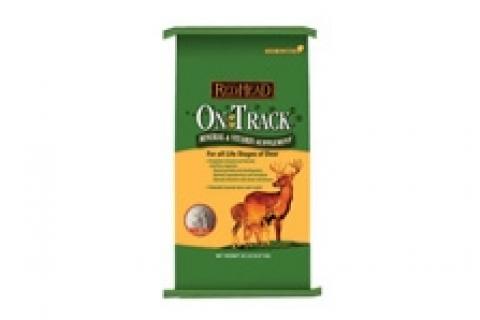
With deer seasons closed, there are lots of habitat alterations you can make that will improve the health of the whitetail herd in your area. One of the easiest and most rewarding is to create a mineral lick. The goal of a lick is to provide vital minerals and vitamins to deer and other wildlife species that might be lacking in the foods they normally eat.
 |
| Mix minerals with dug-up dirt, as deer tend to use it more if it's mixed with soil. |
Hunting over a lick is illegal in many states. But that wouldn't be a productive tactic, anyway. Animals use these mineral sites almost exclusively from late winter through summer-seldom in the fall.
It's rare to see a deer going to a mineral lick during hunting season. The reason is that bucks need vitamins, calcium and phosphorous mostly when they are growing antlers. Does need them mostly when they are in the later stages of pregnancy and nursing their fawns. That means spring and summer.
Minerals play an important role in the health of all animals. They encourage them to eat better, and allow them to digest food more efficiently and reproduce more successfully. Natural licks form in some areas where the mineral supply in the soil is heavy and located near the surface. In most areas, though, natural licks aren't available and you can help wildlife by creating one.
You can purchase bags of minerals at farm co-ops and hunting supply stores like Bass Pro Shops. Ingredients include lots of salt, plus phosphorous, calcium, vitamins and occasionally a flavoring agent to attract the deer. The salt attracts them, too, but is actually an element deer need in the spring time, not just "junk food".
During the spring and early summer, deer operate at a sodium deficiency due to the large amounts of water and potassium in natural forage, according to wildlife biologist Brian Murphy, executive director of the Quality Deer Management Association. "This interferes with efficient sodium conversion in the body and increases the need for sodium intake," he said. "Also, almost all soils located more than 25-50 miles from a seacoast are low in sodium."
Take into consideration the size of the land area when deciding how many licks to put out. For a 50-acre tract, one or two would suffice. On 100 acres, create two or three licks.
Locate an area where you've seen deer or where there is sign present, but not close to a road or where there's a lot of human activity. Deer need to feel safe when they visit a lick. Avoid wet areas, since the mineral will sink in and disappear. You want it to stay concentrated where you put it.
The next step is to clear away sod or weeds if they are present. Dig down four or five inches in about a two foot oval area and pour out 10-20 pounds of minerals. Mix the minerals with the dirt you dug up, and then pour a small amount on top. You can also just pour the minerals out, but I've found deer use it better if it's mixed with the soil.
Return to the spot in a few weeks to see if the minerals have been used and add more every few weeks if required. You'll have healthier does and fawns, and over time, the quality of antlers on bucks should also improve.
- 5438 views

